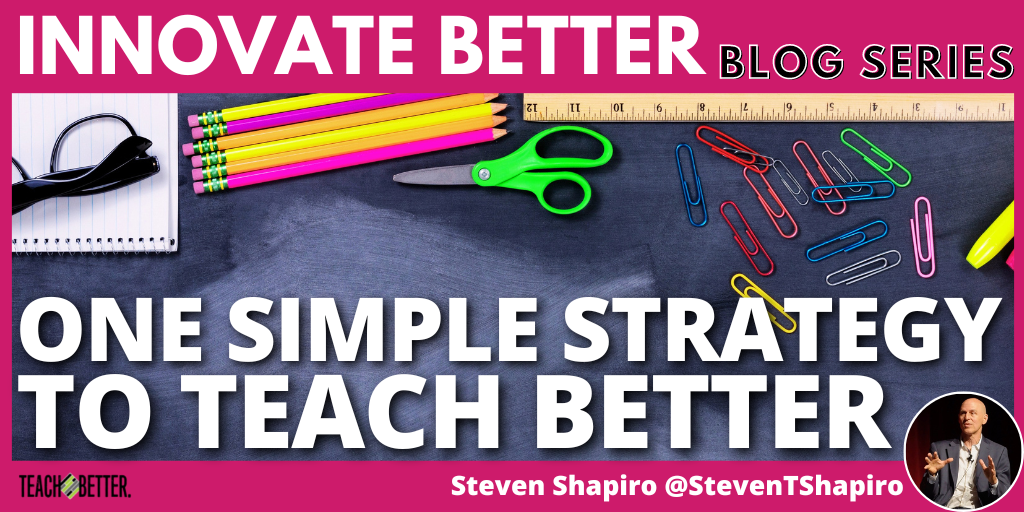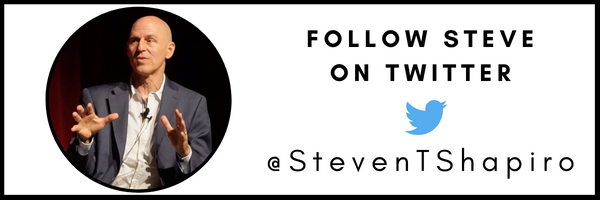TL;DR:
- Teenagers are not bored, disengaged, and unhappy by nature.
- Teachers can improve rapidly if we ask students to give us feedback.
- It can be scary to ask; we need to train ourselves to depersonalize the feedback.
- A healthy feedback loop produces happier students AND a happier teacher.
One Simple Strategy to Teach Better: Ask for Feedback
One of our most deeply ingrained stereotypes is the bored, disengaged teenager. We take it as a given that lots of teens will think that “school sucks.” Many adults roll our eyes when kids say it because we believe it’s just a rite of passage to hate high school.
Of course school can be boring. And restrictive. And tedious. Teenagers are supposed to hate school. We complained about it when we were teens too. Isn’t that the natural order?
Not necessarily.
Teenagers are supposed to hate school. We complained about it when we were teens too. Isn't that the natural order? Not necessarily. Click To Tweet
I spent the second half of my career as the program director of a cross-district high school humanities program called Mosaic. The program is project-based, built on constructivist/progressive principles, and serves public school students from a diverse coalition of ten different districts scattered across greater Columbus, Ohio. Of its many unique qualities, one important distinguisher is Mosaic is a school of choice.
When fellow public school educators visited and observed our successes, they were really impressed. However, some noted that they can’t do what we do because we teach a select group while they have to educate all kids. While there’s a kernel of truth in that sentiment, it overlooks that many of our students were not the “cream of the crop” by traditional measures; many were not finding great success or joy in their district schools. Many were social outcasts or struggling students.
However, what those critiques ultimately overlooked is this essential distinction: Just as our students chose to attend Mosaic, on any day they could change their mind and choose to leave.
Unlike traditional public schools, we didn’t have a guaranteed student body and we lacked an assured source of funding. No guaranteed state dollars. No guaranteed property tax dollars. Districts paid a modest tuition for every student who chose to attend. On any given day, any student could walk away and return to their school, taking their tuition dollars with them. Similarly, superintendents of participating districts could easily drop their districts’ participation and save a little money in their always-tight budgets.
Much like a small business, we needed to maintain an entrepreneurial mindset; we had to care deeply about customer satisfaction. Ultimately, we knew that if students and parents didn’t find Mosaic’s learning experiences highly compelling, we risked going out of business.
We couldn’t afford to have even a small percentage of our kids think that “Mosaic sucks.”
In order to survive, we had to make sure every single day included powerful learning. We had to justify asking kids to get in cars and drive to downtown Columbus each day. Every project had to be meaningful and every lesson impactful. Of course, it wasn’t enough for us to think so; the students had to think so too.
But how could we know what they thought? Simple: we asked them. In addition to creating a safe and open space for students to share their thoughts (even critical ones) every day in class, we ended each project with an anonymous project evaluation. We invited kids to rate every single activity on a four-point scale, from “no significant learning” to “breakthrough learning.” We also had kids rate the entire project and give us feedback on how we could improve it in the future.
At the end of each semester we had students complete an anonymous online survey where they could give us feedback on the program and our work as facilitators. Once a quarter we also had town meetings where we asked to students to assess our entire community on how well we were living up to the program’s 17 guiding principles. The conversations were honest and hard-hitting, often leading to collaborative work on designing solutions or new initiatives.
Did it feel good reading and hearing students’ feedback? Not always. When I first started inviting students to give me feedback back in my 2nd year as a traditional classroom teacher, I had the amazing ability to overlook a pile positive comments and zero in on one negative. Over the years I gained the wisdom to not obsess over isolated critiques and to focus on general trends. I also learned to appreciate that not all students are alike; some Mosaic students would say an activity produced breakthrough learning and others found little value in the same activity. Go figure!
I trained myself to depersonalize the feedback and focus on the work. If students didn’t value an activity or a project, it didn’t mean I was a bad person or a bad teacher. It meant that I needed to rethink my practice and look for ways to engage students more deeply. I had to train myself to be vulnerable and to be okay with it. Let’s be honest: it’s hard having someone evaluate you and give you corrective feedback.
But isn’t that what kids experience every day at school? I figured that if I wanted to build an authentic community based on mutual respect, I should be okay having students give me feedback too. This small step can produce a seismic shift in a school or class culture. It signals a deep respect for the student, a belief that their voice matters. Students show up differently when they feel respected and valued.
Teachers give students feedback because we want them to grow, to learn, to improve. If we create a climate of trust and respect, our students can help us do the same. Asking students for their feedback is one simple strategy to teach better.
[scroll down to keep reading] It’s hard to listen to student voice. It’s scary. Many individual teachers and school administrators avoid asking, in part because they’re afraid of what they’ll hear. When we do get critical feedback, we have a natural instinct to turn it back on the kids rather than focusing on our opportunity to improve. It’s safer to critique the critic than to look inward. It’s safer to defend our practices than to reflect on them.
It’s hard to listen to student voice. It’s scary. Many individual teachers and school administrators avoid asking, in part because they’re afraid of what they’ll hear. When we do get critical feedback, we have a natural instinct to turn it back on the kids rather than focusing on our opportunity to improve. It’s safer to critique the critic than to look inward. It’s safer to defend our practices than to reflect on them.
School leaders and teachers need to cultivate the courage to ask, the habit to do it regularly, and the conviction to take the feedback seriously enough to revisit our practices. Despite the presence of school choice, most kids still attend public schools as a matter of course. But that doesn’t mean all the kids and families in public schools are completely satisfied customers.
We’ll never know for sure unless we ask.
I have lived in a world where teenagers were excited about school; where they looked forward to learning; where school was a joyful experience. So I know it is possible. If we commit to listening to student voice, we can finally bury the stereotype of the bored, disengaged teenager once and for all.




